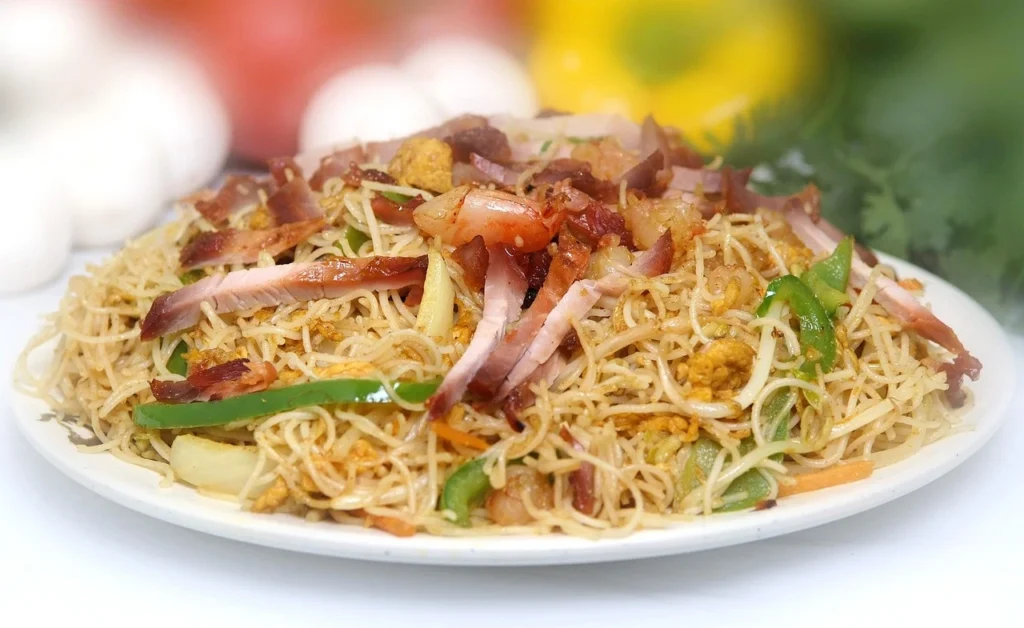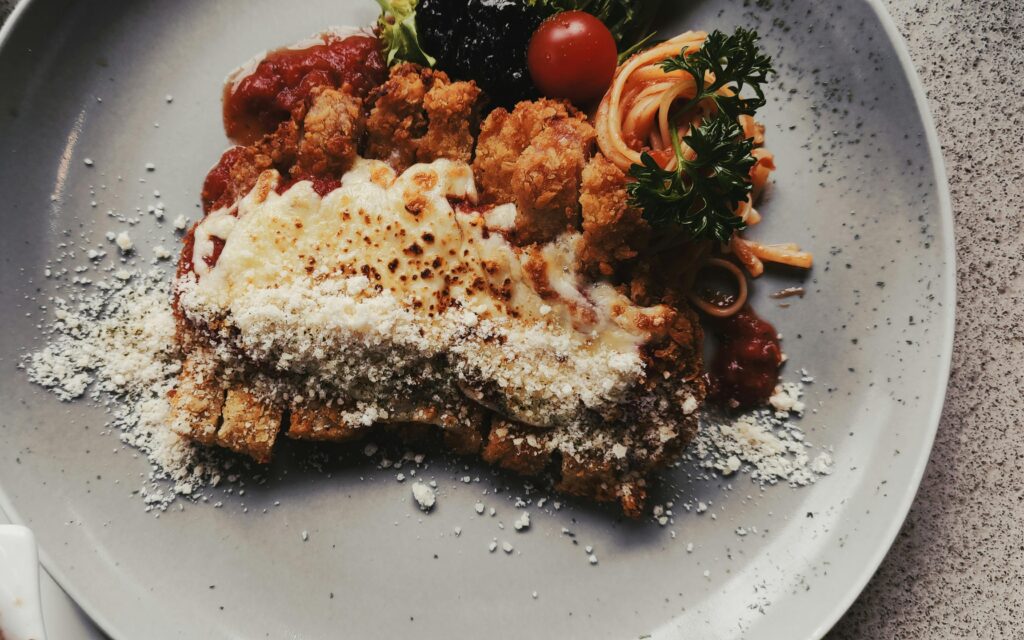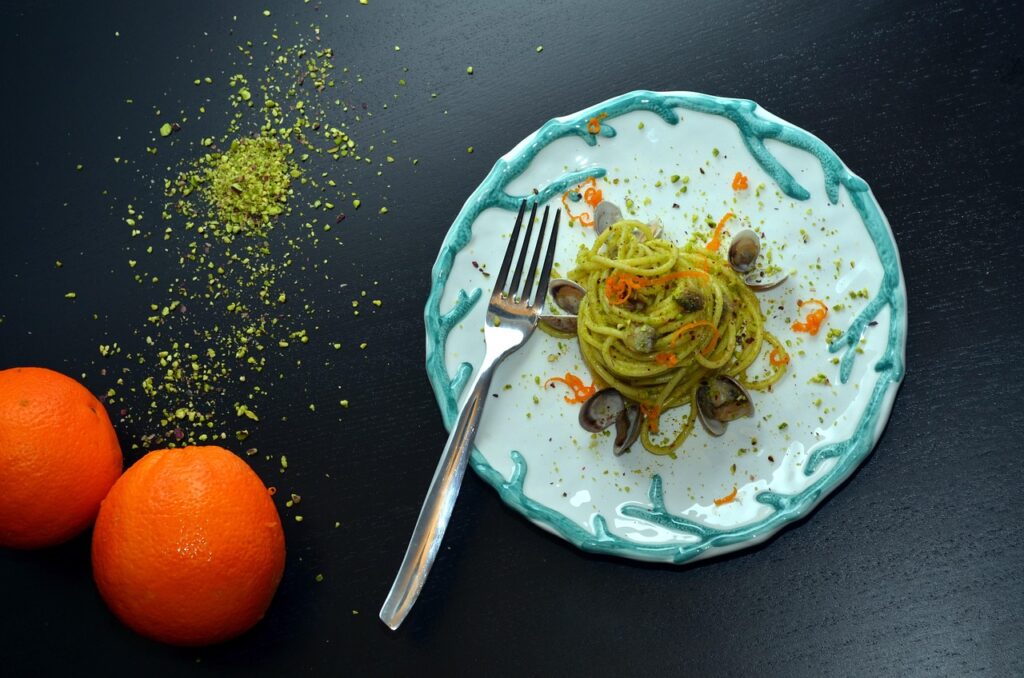Vermicelli: “8 Amazing Facts About Vermicelli That Will Change How You Cook It”
SEO Title: 8 Surprising Facts About Vermicelli That Will Change How You Cook It
Focus keyword: vermicelli
Table of Contents
Defenition
History & Origins of
Types & Ingredients
Nutritional Value
How to Cook Perfectly
In Global Cuisines
Everyday Recipes & Serving Ideas
Tips & Mistakes to Avoid
FAQ
Call to Action
Definition
It is a skinny, thread-like pasta or noodle. The word comes from Italian verme (worm) + -celli (diminutive), so it literally means “little worms.” In practice, it refers to fine, long strands, thinner than spaghetti but thicker than angel hair in many contexts.
Some of them are made from wheat flour, while others are made from rice or other starches, depending on regional food traditions.
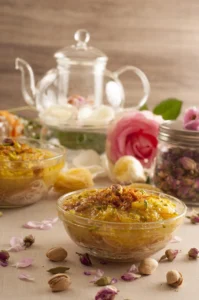
Visit https://pastaloverz.com/ravioli-pasta-guide/
History & Origins
Its roots are mixed and span several culinary traditions.
In Italian cuisine, it has been a staple for centuries as one of the classic long-pasta shapes, often used in lighter sauces and seafood preparations.
Rice noodles (often called rice vermicelli) originate from Asian traditions (Vietnam, Thailand, China, etc.), where thin rice threads are a staple in soups, salads, and stir-fries.
In the Middle East and South Asia, it also appears in desserts or sweet dishes (like seviyan) as well as savory meals.
Through trade and migration, it has evolved, adapting to changes in shape, ingredients, thickness, and method of use.
Visit https://pastaloverz.com/pasta-tetrazzini-reasons/
Types & Ingredients
Vermicelli isn’t one uniform thing. Here are the key types:
| Type | Main Ingredient(s) | Character / Use |
|---|---|---|
| Wheat | Durum wheat semolina or wheat flour | More robust, it holds together well and works well with cream, tomato sauces, and seafood. San Remo’s product is one example. Sanremo.co.nz |
| Egg-noodle | Wheat + eggs | Richer flavor, with a more yellow tone, ideal for soups or simple sauces. sanremo.co.nz+1 |
| Rice | Rice flour and water | Light, translucent, soft texture; popular in Asian and Southeast Asian dishes. |
| Sweet vermicelli/dessert vermicelli (seviyan, etc.) | Wheat or semolina, milk, sugar, sometimes roasted | Used in sweet contexts, such as puddings and milk-based desserts. |
Also, the thickness varies. Some are wonderful threads, while others are slightly thicker. The thickness of the meat affects cooking time, texture, and its suitability for various uses.
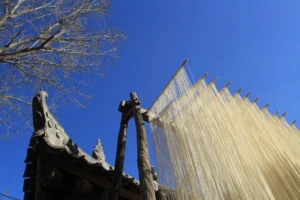
Visit https://pastaloverz.com/linguine-pasta-guide/
Nutritional Value
Understanding what you get from it helps you plan better meals. Here are typical nutritional numbers (will vary by ingredient and whether raw or cooked):
Calories: Approximately 157 kcal per 100g of cooked vermicelli. FatSecret
Carbohydrates: Major component (~30-45g per 100g cooked). FatSecret+2FatSecret+2
Protein: Around 5-8g per 100g cooked in wheat varieties. FatSecret+2FatSecret+2
Fat: Low in fat, less than 1-2g per 100g cooked unless enriched or added ingredients like eggs. sanremo.co.nz+2FatSecret+2
Fiber: Moderate; likely 1-3g, depending on whether the ingredient is refined or whole. sanremo.co.nz+2FatSecret+2
Vitamins/minerals vary less uniformly. Wheat kind provides some iron, as well as possibly B vitamins; rice or starch-only types offer fewer nutrients unless fortified.
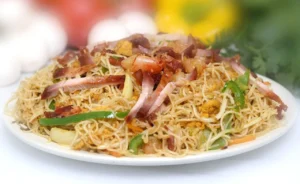
How to Cook Perfectly
Here’s how to treat vermicelli kindly — avoid mush, get the texture just right.
Know your type. Wheat, egg, rice, and sweet — each needs different handling.
Boil aggressively, then reduce. Use a large pot of salted water. For wheat type: Bring water to a boil, add it, and stir gently so the strands don’t stick together. Cooking time may be ~5-7 minutes for thin wheat types; it may be less for rice, depending on its fineness.
Don’t overcook. It gets soft fast. Check a strand: it should be tender but still with some bite (“al dente” for wheat).
Rinse (if using rice kind or when preparing cold dishes/salads). To stop cooking and remove surface starch so things don’t clump.
Drain well. Shake or use a colander, let excess water drip. If using in a sauce, toss the pasta immediately with the sauce so it absorbs the flavor.
Finish with fat or sauce. A little olive oil, butter, or sauce helps keep strands separate and adds flavor.
- Visit https://pastaloverz.com/cappelletti-pasta-guide/
In Global Cuisines
Vermicelli shows up everywhere. Here’s a tour:
Italian: A wheat-based type with light tomato or cream-based seafood sauces. Because it’s thinner than spaghetti, the sauce-to-noodle ratio is different.
Vietnamese / Southeast Asia: Rice vermicelli in bowls and salads — think bún thịt nướng (cold rice vermicelli with grilled pork & herbs). Wikipedia
Taiwan: Dishes like oyster vermicelli (with misua or Chinese vermicelli + oysters) in soup form. Wikipedia
Middle East/North Africa: It is commonly used in soups, such as harira, and also appears in desserts.
South Asia: Sweet seviyan, payasam, or kheer (milk with sweet vermicelli, nuts, spices).
Each region tweaks the thickness, cooking method, and accompanying flavors (herbs, spices, sauces), but keeps vermicelli’s identity as a delicate thread.
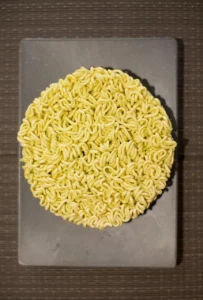
Visit https://www.youtube.com/watch?v=scGEig4UX64
Everyday Recipes & Serving Ideas
Here are some ideas with variety:
Stir-fry with pork or chicken: Use wheat or egg type, toss with soy sauce, garlic, ginger, and spring onions.
Its Soups: Rice vermicelli in clear broths (with seafood, chicken, or vegetables).
Cold noodle salads: Rice vermicelli, fresh herbs, crunchy veggies, and a tangy dressing.
Sweet dessert: Roast it in butter, then simmer in milk or coconut milk with cardamom, sugar, and nuts.
Vermicelli with tomato & cream sauces: Ideal with longer wheat vermicelli, especially when paired with seafood or mild cheeses, as the flavors are well-balanced.
A recipe from San Remo: Vermicelli Chili Pork Stir-Fry. It uses egg noodles, sesame, garlic & hoisin—flavorful and straightforward.
Tips & Mistakes to Avoid
Here are pitfalls I see people often make (I’ve been guilty too) and how to dodge them:
Over-soaking or over-boiling rice vermicelli → mush.
Skipping rinse for cold dishes → noodles stick together.
Too much salt in the cooking water or sauce → the flavor overwhelms it.
Using heavy sauces with fine vermicelli → the sauce drowns the strand instead of enhancing it.
Not using enough water → when cooking wheat type, it clumps if crowded in pthe ot.
FAQ
Q: What is the difference between wheat and rice types?
A: Wheat type is made from wheat flour/semolina (sometimes eggs), with a firmer texture, suited to heavier sauces. Rice type is made from rice, becoming softer when cooked and more fragile, and is used extensively in Asian soups and cold dishes.
Q: How long does it take to cook?
A: Depending on type and thickness, rice type often takes just a few minutes (sometimes soak + brief boil); wheat versions usually take 5-7 minutes for thin ones, more for slightly thicker. Always check the packet instructions and do a taste test.
Q: Can I reuse leftovers?
A: Yes. Store the cooked, cooled vermicelli (after tossing it with a small amount of oil) in the refrigerator for up to 2-3 days. Reheat by briefly submerging in boiling water (for wheat) or using a microwave/steaming for rice type.
Q: Is it gluten-free?
A: Only from rice or other non-gluten grains. Wheat and semolina vermicelli contain gluten. Always check the packaging to ensure you’re getting a gluten-free product.
Q: How to prevent it from sticking together?
A: Use plenty of water, stir gently early in cooking, rinse (if appropriate), and toss with a bit of oil right after draining.
Q: What is the difference between vermicelli and spaghetti?
A:
Vermicelli and Spaghetti are both long, strand-like pastas, but they differ mainly in thickness and regional use. Vermicelli is thinner and often used in soups, light pasta dishes, and desserts, while Spaghetti is thicker and pairs best with rich sauces like marinara or carbonara.
In Italian cooking, Vermicelli is slightly thinner than Spaghetti. However, in Asian cuisine, “Vermicelli” can also refer to rice or mung bean noodles, which are entirely different from Italian pasta.
In short, both belong to the same family of long pastas, but their texture, thickness, and typical dishes set them apart.
Call to Action
If you enjoyed learning, try cooking something new with it this week. Experiment with a rice vermicelli salad or a wheat vermicelli seafood dish. Tag us @Pastaloverz on Instagram with your vermicelli masterpiece—Eager to see how you bring those delicate strands to life.

.
